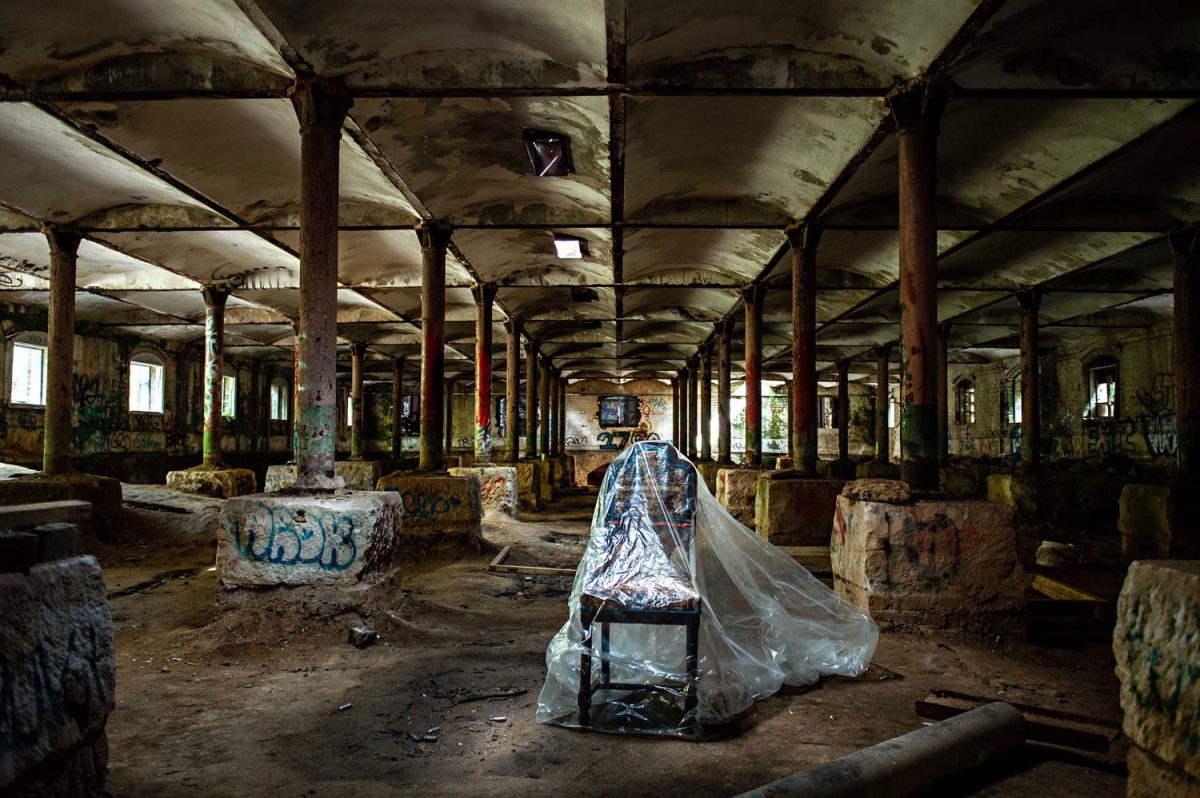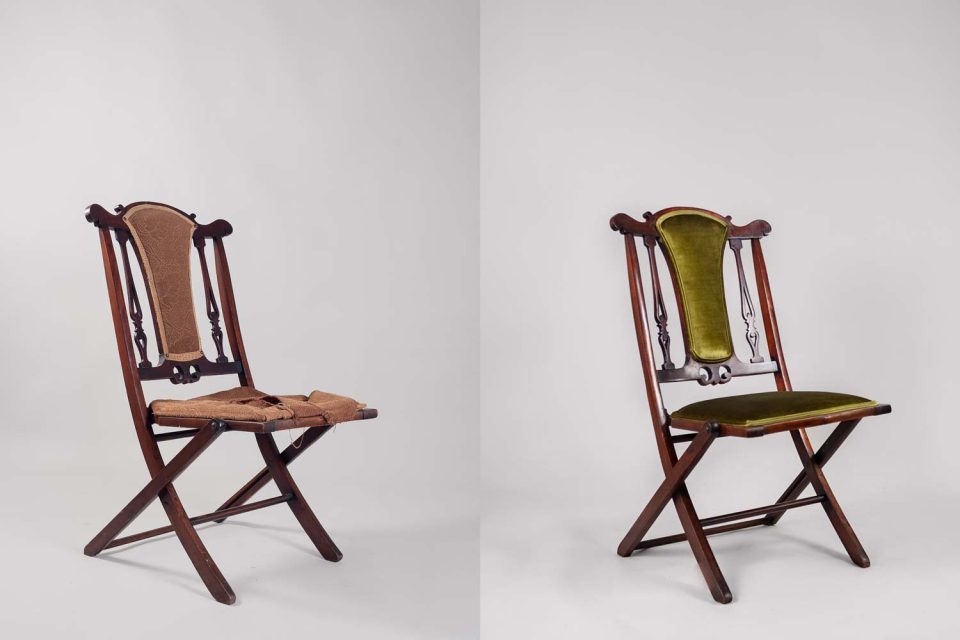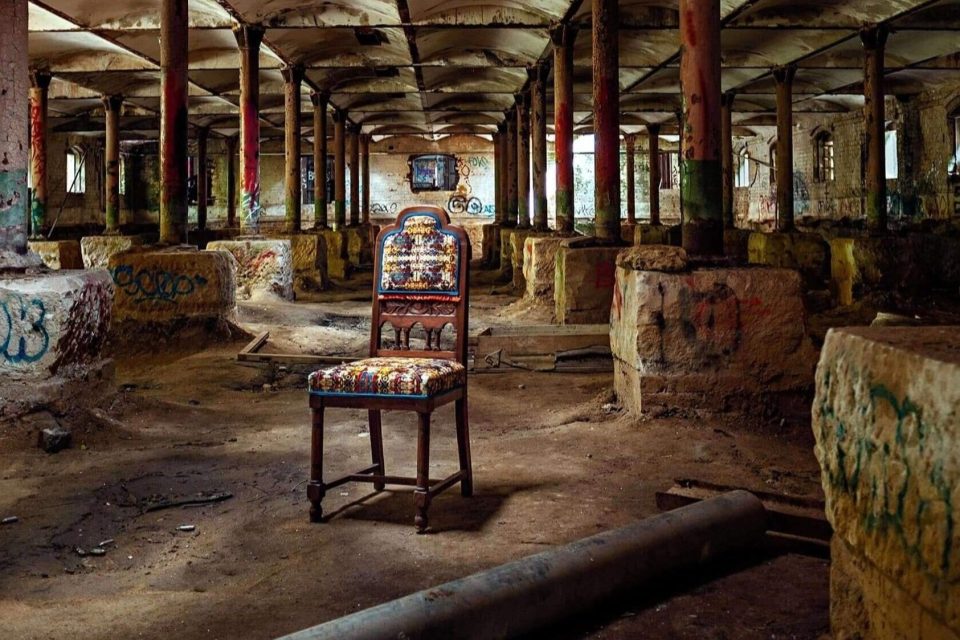
Restoration is a costly exercise, but can we afford not to consider it? Photo: Dida Sundet Photography.
In the greater Sydney region, an estimated 48,000 tonnes of furniture are dumped each year in kerbside pickups alone.
Chilling as the statistic is, chances are you’ve disposed of a piece or two yourself. That’s because when most people compare the cost of refurbishing, re-upholstering or upcycling an item to replacing it with something mass-produced, the environmentally friendly option appears cost prohibitive.
But not to Illawarra expert Britta de Laat. A unique set of qualifications and skills places the owner of furniture restoration business Dumped & Ditched in a position to do the math with a bit more data.
She recommends taking a longer view, which includes comparing the life expectancy of the cheap foam used in high street furniture (four to five years) to that of commercial-grade foam, which lasts up to 20 years before breaking down.
“The cost of a $2500 bespoke chair over 10 years is $250 a year or $20.80 a month,” she says.
“When you consider all the benefits that come with this price tag versus all the consequences of buying things that are made to break, we are seeing a different picture.”





Britta’s fascination with discarded items blossomed in London where, while completing a degree in fine art, she marvelled at the things she would find abandoned. But it wasn’t until later, when she became a film set designer, that she gained the skills to do something about it.
Years designing props and sets would often entail sourcing something old and transforming it. This turned out to be the most fascinating part of the job, which eventually led to her retraining as an upholsterer in Amsterdam.
There Britta became intimately acquainted with what goes into making a piece, and the first iteration of Dumped & Ditched was born.
The Dumped & Ditched narrative is laid out in the imagery on the website, highlighting one of Britta’s passions and skills – visual storytelling. Pictures show hand-restored, unique and stunning items of furniture juxtaposed against an abandoned warehouse, a decommissioned brewery or piles of landfill.
When the family relocated to the Illawarra seven years ago, Britta brought the business with her and the hunt for unwanted items with hidden potential continued.
With time and application of her finely honed skills, Britta has transformed countless pieces into treasured things of beauty now scattered in homes across Australia and beyond.
“I most enjoy restoring pieces that have very broken elements – parts so broken that you have to rethink how to use them. I like when it’s not necessarily a straightforward case of upholstering or restoration, and you can’t necessarily fix it or return it to what it once was. It gives me a new impetus – what can I do differently to give this item a second life?” she says.
“There was a chair that was made out of rattan that had been badly burned. I stripped it, and I could’ve redone it with rattan but I knew the age of that rattan wouldn’t match the age of the timber frame. I played with leather and other materials and ended up with a Paul Smith fabric. It was unusual, it was stunning. That sort of thing gives me a bit of a rush.”



Trained in both classic and modern upholstery and restoration techniques, Britta says truly mastering the upcycle takes dedication and the honing of numerous skills.
“In upholstery alone you need to master both classical and modern techniques. Pre-war you’d hand sew everything out of fabrics like horse hair and cocus fibre and use coil springs and it required a lot of layers and a lot of time – but if you did it well and the materials were good, it would last 100 years,” she says.
“Post-war, as new manufacturing processes were introduced, for a while we still used the traditional materials but with mass-manufacturing processes. Then the materials started to change. First we transitioned to latex and eventually, the foams most commonly used today, which aren’t made to last.
“Manufacturing is now done mostly offshore, with cheap materials and cheap labour. International economics is why manufacturing in Australia has disappeared in the past 30 years.
“I think we all know we can’t continue to consume this way. There’s so much furniture in this world it’s crazy, our landfills are literally full. That’s why Dumped & Ditched exists – as an alternative for anyone with an eye for the bigger picture and furniture that they could never leave on a kerb.”














